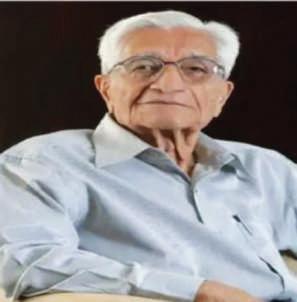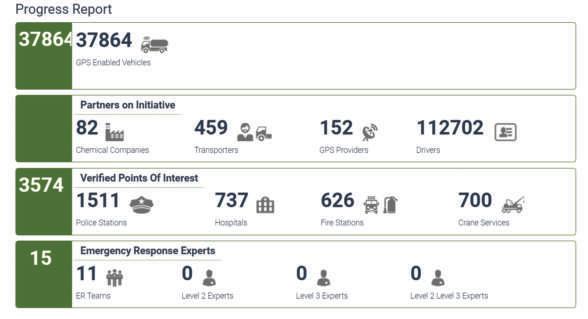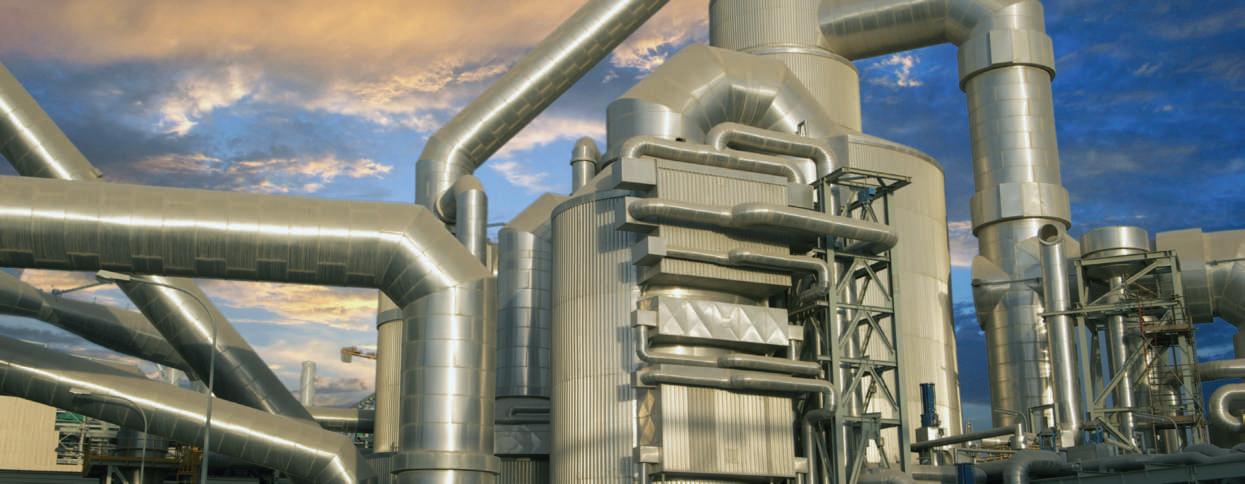
19 minute read
CREATING AN EFFECTIVE ASSET INTEGRITY PROGRAM
by ChemNews
LAUREN MOYER & MATHEW HEDLUND
[PAPER PRESENTED AT THE AMERICAN INSTITUTE OF CHEMICALS ENGINEERS 2018 SPRING MEETING AND 14TH GLOBAL CONGRESS ON PROCESS SAFETY HELD IN ORLANDO, FLORIDA, USA DURING APRIL 22-25, 2018]
Advertisement
KEYWORDS: asset integrity, mechanical integrity, reliability, risk management
its Risk Based Process Safety (RBPS) approach to process safety management(1). However, in addition to life safety, asset integrity is also strongly connected to the business and environmental sustainability of the chemical process. If the equipment cannot reliably perform its design intent, the undesirable financial and societal consequences are often immediately apparent even if a process safety event does not occur. Documented mechanical integrity related incidents in
ABSTRACT
Establishing an effective asset integrity management (AIM) program begins with the creation of a leadership team at the appropriate level of management. The team membership should encompass all areas of responsibility for asset integrity. Management at the corporate level needs to provide support, but cannot effectively drive execution of the details. Program oversight at a low level in the organization can result in inconsistent policies being implemented across the enterprise or insufficient resources to fully implement the AIM program.
The AIM program should drive overall risk management for all assets. Regulatory covered processes may have higher safety risks, but non-covered assets may still pose significant business risk that require elevated coverage.
The AIM program should be established as a full life cycle program, from design to decommissioning. Defining and documenting standards for each phase of the life cycle in an AIM procedure is critical. Clearly defining the roles and responsibilities at each phase is also essential to an effective AIM program. The roles need to be filled with the correct subject-matter experts who are actively engaged with the leadership team.
A successful AIM program can improve existing risk management and reliability efforts through appropriate management direction, thoughtful application of the program to all assets, and clear documentation of the expectations for the full life cycle of the equipment.
1INTRODUCTION
Mechanical Integrity or Asset Integrity has been recognized as a critical element in process safety for many years. In many countries, (the United States, the UK, and the European Union, for example), having a formal Asset Integrity Management (AIM) program is a legal requirement for processing certain types and quantities of chemicals.
The Center for Chemical Process Safety (CCPS) recognizes the overall value of a well-defined and executed AIM program in industry have had tremendous costs in lives, community health, environmental impact, and dollars.
Despite its importance to a company’s sustainability, managing asset integrity has a number of challenges. Responsibilities for execution of the asset integrity program are often spread throughout the organization and may be segregated by equipment type. Section 1.2 of Guidelines for Asset Integrity Management (2) states that “AIM is a product of many activities, usually performed by many people…” A silo approach in these activities could easily become disorganized and disjointed. Furthermore, ownership of the asset integrity program is often weighted towards the reliability/ inspection and process safety groups. This often results in a focus on regulatory compliance instead of overall process sustainability. Due to this, the scope of the program beyond regulatory compliance may not be well-defined. Significant safety and business risk could still exist in “non-covered” assets and should be addressed by the asset integrity program. Similarly, the focus of the program may be on inspection and testing requirements instead of looking at the full life cycle of the equipment. Each of these issues points to an overall need for a more centered ownership for the asset integrity management program with a focus on all phases of the equipment life cycle.
2MANAGEMENT LEADERSHIP
2.1 ROLES AND RESPONSIBILITIES - THE WHO AND THE WHAT
Management leadership is a critical element in establishing a process safety culture and successfully implementing any of the aspects of risk-based process safety. Guidelines for Asset Integrity Management(2), lists the following primary responsibilities for leadership in Asset Integrity Management: 1) Establishing direction, scope, and culture of the AIM program at the corporate level 2) Ensuring that knowledgeable, trained people are performing appropriate activities with effective tools and methods 3) Instilling the expectation that the business plan will be fulfilled only within the safe operating limits of the equipment as dictated by its condition. 4) Ensuring that AIM program activities are being executed as planned, results are being captured and analyzed, and corrective actions are being completed. 5) Ensuring that appropriate controls are implemented and maintained within the facility’s hazard management system for all related AIM activities 6) Providing the necessary resources to accomplish all of the above activities.
Management at the highest level of an organization must set the expectations for the process safety program and be committed to its execution for the program to be successful. However, directives from the corporate level often resemble the performance-based standards that the directive was intended to fulfill. These typically state that a program should be in place and should serve to prevent an unintended negative consequence, but frequently details of implementation are not well-defined. The larger and more diverse the organization is, the more likely it is that corporate policies could take this form. On the other end of the spectrum, implementation of an asset integrity program by first-line management or by siloed resources can lead to inconsistency in implementation across the organization and an inability to direct all the resources necessary to implement the program. Leadership and organization at the site or regional level are needed to effectively execute the responsibilities listed above. An AIM Management Leadership Team comprised of mid-level management for a site or group of sites can provide the right balance to drive company process safety culture, make risk decisions from a holistic view-point, and provide resources to implement the AIM program.
Having the right breadth of leadership commitment is equally important as the right level of leadership to the success of the AIM program. Asset Integrity is unique in process safety disciplines in that several diverse areas of expertise and responsibility are required to achieve the goals of reliable performance and prevention of loss of containment events. As illustrated in Figure 1, operations, maintenance, reliability and inspection groups, engineering, project management, and process safety personnel are all responsible for different aspects of an asset’s performance through its life cycle and should all have some level of ownership in the AIM program. Communication and cooperation between the site or regional leadership of each of these groups are necessary to the success of the AIM program.
The Management Leadership Team should provide ownership and leadership to the AIM efforts for the entire equipment life cycle. It should be empowered to fulfill several key functions: 1) Recommend AIM Policy and Practice for the area of responsibility. This includes
FIGURE 1: RESOURCES REQUIRED FOR MAINTAINING EQUIPMENT RELIABILITY
CONSTRUCTION QUALITY MAINTENANCE WORK PROCESSES
INSPECTION AND TESTING PLANS
EQUIPMENT RELIABILITY
PROCESS SAFETY RISK ASSESSMENT OPERATING DISCIPLINE
ENGINEERING DESIGN
determining the scope of the program and the appropriate codes and standards to be utilized and documenting all procedures, practices, roles and responsibilities. 2) Determine and Monitor
Appropriate Measures. This could include determining how best to capture the data relevant to the AIM program, and monitoring for progress or areas that need more attention and resources. 3) Review and Process AIM-Related
Audit Findings. The Leadership
Team should be connected to the regular PSM audit processes for their facilities and work to address findings related to asset integrity. 4) Monitor Overall Health of AIM
Processes. Ensuring health of the program includes both a look back at past data, but also a look forward to new codes and standards and continual improvement. 5) Establish Appropriate Operational
Discipline Related to MI
Processes. The Leadership Team should be able to establish a culture of Asset Integrity in their facilities. 6) Report to Site/Corporate
Management periodically.
This establishes a connection between corporate process safety culture and goals and the
AIM implementation policy of the site/region.
These roles correspond closely to the overall management responsibilities laid out in the Guidelines for Asset Integrity Management recommendations listed above, and meet the intent of several elements of risk-based process safety, such as Process Safety Culture, Compliance with Standards, Operating Procedures, Conduct of Operations, Measures and Metrics, Auditing, Management Review and Continuous Improvement.
2.2 AIM LEADERSHIP TEAM BENEFITS
There are several key benefits that can be realized from this approach to Asset Integrity
Management. This team of operations, maintenance, engineering, safety, and reliability leaders have an interest in overall risk management and process sustainability and not merely regulatory compliance. They know the full value of keeping processes running and chemicals contained and can manage the AIM program with these goals in mind.
Having representation from each of the key groups involved facilitates communication between these groups on asset integrity and equipment life cycle issues that could impact the sustainability of the facilities. Also, there is a greater awareness of the roles of each group in the asset integrity process, and that can lead to potential improvements in effectiveness and efficiency. This group should be in a position of leadership to set priorities and direct resources to execute the AIM procedures and policies, optimize implementation priorities, and address any changes or enhancements needed.
Monitoring the health of the AIM program allows the Leadership Team to be proactive instead of reactive in addressing any issues associated with how the program is being executed at the site/region. For example, routine “health checks” of the programs for various equipment disciplines can be conducted with the Leadership Team and the stewards of that discipline.
Three key questions should be asked during these reviews: 1) What is going well in the program? 2) What are the gaps for this program? 3) What changes might be coming for this program? (new standards/code, new technologies, etc.)
Finally, an engaged AIM leadership team can provide leadership in process safety culture for the organization. This middle management group is visible to both operations personnel and corporate management, and can engage with both groups on the importance of process safety and how asset integrity impacts process safety. Providing clear communications in both directions is an important role for this group. With a clear leadership model in place, further improvements in the AIM program can be realized.
3ALL-ENCOMPASSING PROGRAM
Regulations, such as OSHA 1910.119 (3), mandate which processes are subject to process safety regulation based namely on toxicity, flammability, and quantities. While adhering to this ensures regulatory compliance, a good AIM program should have a more holistic approach to risk management. Example 1: Heat transfer media systems (e.g. Therminol®, Dowtherm®, Syltherm®) pose inherent safety risks that may require treating these systems as if they were regulatory covered processes, even though they do not meet the coverage requirements in some jurisdictions. Example 2: Processes that contain toxic and/or flammable material inventories below the regulatorilydefined minimum quantity may also require treating as if they were covered.
Depending on how PHA boundaries are established, storage and process areas may be segregated. This could leave the process area having insufficient quantities of hazardous materials to be a covered process, yet still poses a higher safety risk.
While safety plays a vital role in risk management, non-covered assets may pose a significant business risk that require elevated coverage.
Example 3: Refining of a nonregulatorily-covered chemical is considered non-covered; however, if it is crucial to the business, it should be maintained at a much higher level. Although there may not be a significant safety risk, loss of production can be a major concern that impacts how process equipment is inspected and maintained.
Having diverse leadership, particularly operations and maintenance leaders, involved in the AIM program with visibility to safety, business, and other potential risks can ensure that the right level of coverage is applied to all the assets in the facility.
4LAYING THE PROGRAM FOUNDATION
Documenting the scope and requirements of the AIM program from the management leadership team to the maintenance and inspection personnel involved is important for the consistent execution of the program. Procedures should be written that clearly document the scope of the program, expectations for execution, and roles and responsibilities.
One important step is in realizing that all equipment is not created the same and cannot be handled together in one single AIM process. Design codes and standards, inspection
Technologies and frequencies, failure modes, and repair considerations are all very different between pumps, vessels, piping, tanks, and instrumentation. Separate AIM sub-processes should be documented for each equipment type, with appropriate subjectmatter experts for that equipment type serving as a steward for that procedure. The stewards are ideally based in engineering or reliability functions with detailed knowledge of the equipment type and the applicable codes, standards, and best practices. These stewards are responsible for maintaining the procedures and processes and providing routine “health checks” to the Leadership Team on their portion of the program. Figure 2 shows a possible arrangement for equipment specific procedures. This could vary based on resources, asset types, and organization of resources for a given site or group of sites.
When developing the procedures for the AIM Program, a tiered approach can provide the right level of information to the right resources at all parts of the program. Figure 3 illustrates this hierarchy of procedures. A General Procedure, maintained by the Management Leadership Team, should define the overall scope and expectations of the program, responsibilities of the management team, and standard measures and tools to be used. The equipment type stewards discussed above would be responsible for the Equipment Specific Procedures. These procedures should cover the scope of program coverage for that equipment type, asset integrity requirements and responsibilities along the life cycle of that equipment, and general information on inspection methods and frequencies. These procedures will reference other established documents such as design codes, regulations, internal standards, inspection procedures, work practices, and training documents.
FIGURE 2: SUGGESTED DIVISIONS OF EQUIPMENT TYPES FOR AIM PROGRAMS AND PROCEDURES
PRESSURE VESSELS
PIPING SYSTEMS
ROTATING EQUIPMENT
RELIEF DEVICES
FIELD INSTRUMENTATION
SAFETY INSTRUMENTED SYSTEM
STORAGE TANKS & SECONDARY CONTAINMENT
5FULL LIFE CYCLE PROGRAM
The AIM program should be established as a full life-cycle program, from design (cradle) to decommissioning (grave). Defined roles and responsibilities throughout the life cycle are a key aspect. Management, subject-matter experts, project teams, and operations all help in the creation and design of an effective AIM program and need to actively engage with the leadership team on a regular basis.
Early decisions made in the design stage have a significant impact to managing future assets. Materials of construction, vessel ratings and design specifications, equipment spares, reducing chemical inventories, facility siting considerations, and other decisions
FIGURE 3: PROPOSED PROCEDURE STRUCTURE FOR AN AIM PROGRAM
GENERAL AIM PROCEDURE FOR SITE/REGION
Design Codes Regulations Internal Standards
Training Documents Inspection Procedures
Work Practices
greatly affect the management and cost of the AIM program. z Higher metallurgies can greatly reduce corrosion rates and increase equipment life z Higher pressure/temperature ratings can reduce the need for additional relief and/or control systems z Spare pumps can eliminate the need to wait until process turnarounds to repair seal leaks
For the design process to be successful, the correct subjectmatter experts need to be aligned with the AIM program goals. The capital process may be aimed at reducing costs whenever possible, thinking in the short-term without consideration of increased operating costs and reduced reliability and operability. A holistic approach guarantees a balance between shortterm and long-term benefits. Subjectmatter experts for each process/ equipment type should be appointed as stewards to define relevant mechanical integrity standards and procedures and give guidance during design to ensure those standards are being met. These standards should be maintained in a central location with all other standards to maintain consistency across projects and operating areas.
Properly commissioning new equipment guarantees everything is consistent with the intended design and is in good working order before chemicals are introduced. Fabrication is not guaranteed to be accurate and important design constraints can get lost in installation.
Meeting a construction schedule is important, however if critical conditions are not met the leadership team should give guidance on delaying startup or creating a plan to reasonably correct the issue.
The operating phase of the life cycle is the core of a good AIM program and covers everything from startup, inspections, corrosion monitoring, managing change, and responding to deficiencies. This phase requires the highest level of coordination and communication between manufacturing, maintenance, process safety, and reliability organizations. Manufacturing staff need to be aware of how to properly and effectively manage their areas to increase facility uptime and reduce risk. While manufacturing holds the key to providing the necessary information, they need direction from equipment subject matter experts and the leadership team on how to properly and effectively manage asset integrity for the facility.
Decommissioning may not seem like it belongs in an AIM program, but it is especially important when there is a possibility of reusing equipment. It also becomes critical when assets are abandoned in place and processing areas become overly congested and difficult to operate. The vessel inspector may seem like the gatekeeper, but it is operations that needs to provide guidance on how to decommission their equipment as they are the ones who will live with those decisions going forward.
By having the AIM program involved at all stages throughout the life cycle of the process, costs can be optimized with reliability and operability. It is this optimization that is key as minimizing costs or maximizing reliability can increase risk either to the process safety or to the financial performance respectively.
6OVERALL SUCCESS STORIES
6.1 LOW PRESSURE STORAGE TANKS
The creation of an Asset Integrity Leadership Team and restructuring Asset Integrity processes based on the principles above has resulted in measurable improvements in managing the reliability of the equipment at a large chemical process site. One most notable improvement is in the handling of low pressure storage tanks. Per OSHA 1910.119, mechanical integrity programs should be applied to “Pressure vessels and storage tanks”. Previously, pressure vessels and storage tanks were managed together under the same mechanical integrity procedures and programs. However, due to the legal requirements of ASME pressure vessel code in some states, pressure vessel construction, inspection, and repair requirements tended to dominate the program.
By including key engineering, inspection, and safety expertise on the Site AIM Leadership Team, it became apparent that low pressure storage tanks should be managed separately from pressure vessels to improve the effectiveness of the inspection and repair practices. A group of storage tank subject matter experts then developed an asset integrity procedure that addressed asset integrity issues from design and construction through inspection and repairs for both storage tanks and their secondary containment structures.
Because a very large site or a group of sites can include thousands of low pressure storage tanks, a risk-based approach was employed to manage such a large program. Factors such as age, material of construction, tank contents, operating conditions, and potential business impact were used to prioritize inspection schedules instead of simply regulatory coverage.
Fully implementing this program of inspections is a multi-year effort, but the site has already seen benefits in planned inspections and repairs and prevention of chemical releases and business interruptions. This renewed focus on low pressure storage tanks as a stand-alone discipline has also resulted in improvements in inspection tools and techniques at the site and an optimization of inspection practices based on requirements in different safety and environmental regulations for different types of tanks.
6.2 OPTIMIZING INSPECTION RESPONSIBILITIES
Another example of improvement lies in optimization of roles and responsibilities. By having a leadership team led by operations and maintenance, and having that team connected with the right subject matter experts, the types and frequencies of inspections can be optimized. For example, many pieces of equipment, such as piping and pumps, can be effectively visually inspected for potential defects by operations personnel on their daily rounds through the area.
Operations personnel should be trained on what to look for and how to report deficiencies, but training on these first-tier inspections can be accomplished by simple online job training modules. Having operations personnel serve as the first level of inspection can save considerably on inspection labour costs. The daily presence of operations personnel in the area can help get many deficiencies identified and addressed more quickly than occasional scheduled outside inspections.
program should be more than just inspection and testing programs to provide maximum benefits. A cross-functional management leadership team for a site or region or group of sites can ensure that the AIM program is applied to the right assets with the right level of detail for the entire life cycle of the equipment. Involvement from the operations and maintenance organizations can drive a clear focus on overall sustainability and risk management. This team can ensure that the program scope and resources are optimized for the facility and that the program is continually improving. Defining appropriate subject matter experts to develop processes and procedures with a life cycle view of the equipment is key in executing the AIM program. These processes and procedures can be used by engineering, construction, operations, maintenance, and reliability personnel to ensure that the equipment is appropriately 7CONCLUSION Asset integrity programs ensure designed and constructed and continues to be reliable for its entire life. This reliability is a critical that the process continues to component in preventing loss operate as designed and with same of containment events, and the reliability assumed at the beginning resulting safety and environment of the life of the process. They are impacts. required by regulation for some operating processes, but a good practice to ensure continued reliable performance for all assets. A recent edition of the Process Safety Beacon (4), highlighting mechanical integrity concerns, stated that “You don’t get what you expect, you get what you inspect.” While inspections are a crucial component to equipment reliability, a well-managed AIM
8 REFERENCES
[1] CCPS, Risk Based Process Safety, Center for Chemical Process Safety, American Institute of Chemical Engineers, New York, NY (2007) [2] CCPS, Guidelines for Asset Integrity Management, Center for Chemical Process Safety, American Institute of Chemical Engineers, New York, NY (2017) [3] 29CFR1910.119 “Process Safety Management of Highly Hazardous Chemicals” (1992) [4] “Process Safety Beacon”, Chemical Engineering Progress, May 2015
THE AUTHORS:LAUREN MOYER, Principal Chemical Engineer - Plant Protection, Tennessee Operations, Eastman Chemical Company, P. O. Box 1972, Kingsport, TN 37662 Email: lmoyer@eastman.com & MATTHEW HEDLUND, Senior Chemical Engineer, Chemicals Development Division, Eastman Chemical Company, P.O. Box 511 Kingsport, TN 37662 Email: mhedlund@eastman.com “COURTESY: MR. SHAKEEL KADRI, MR. UMESH DHAKE & MR. VISHAL CHAVAN, Center for Chemical Process Safety, AIChE, 120 Wall Street, 23rd Floor New York, NY 10005, http://www.ccpsonline.org. Tel +1.646.495.1370, Fax: +1.646.495.1504 & Tel +91.22.420.191. 30, Fax: +91.22.420.191.91(India). The Center for Chemical Process Safety (CCPS) was founded by the American Institute of Chemical Engineers in 1985 to give engineers the tools they need to prevent further accidents like Bhopal. Since that time, CCPS has published more than 100 books on all aspects of process safety and established a dynamic university curriculum for process safety. CCPS is supported by the contributions and voluntary participation of more than 180 companies around the world. CCPS remains at the forefront of issues relevant to industry. For more information about CCPS, please visit www.ccpsonline.org or contact ccps@aiche.org”.










